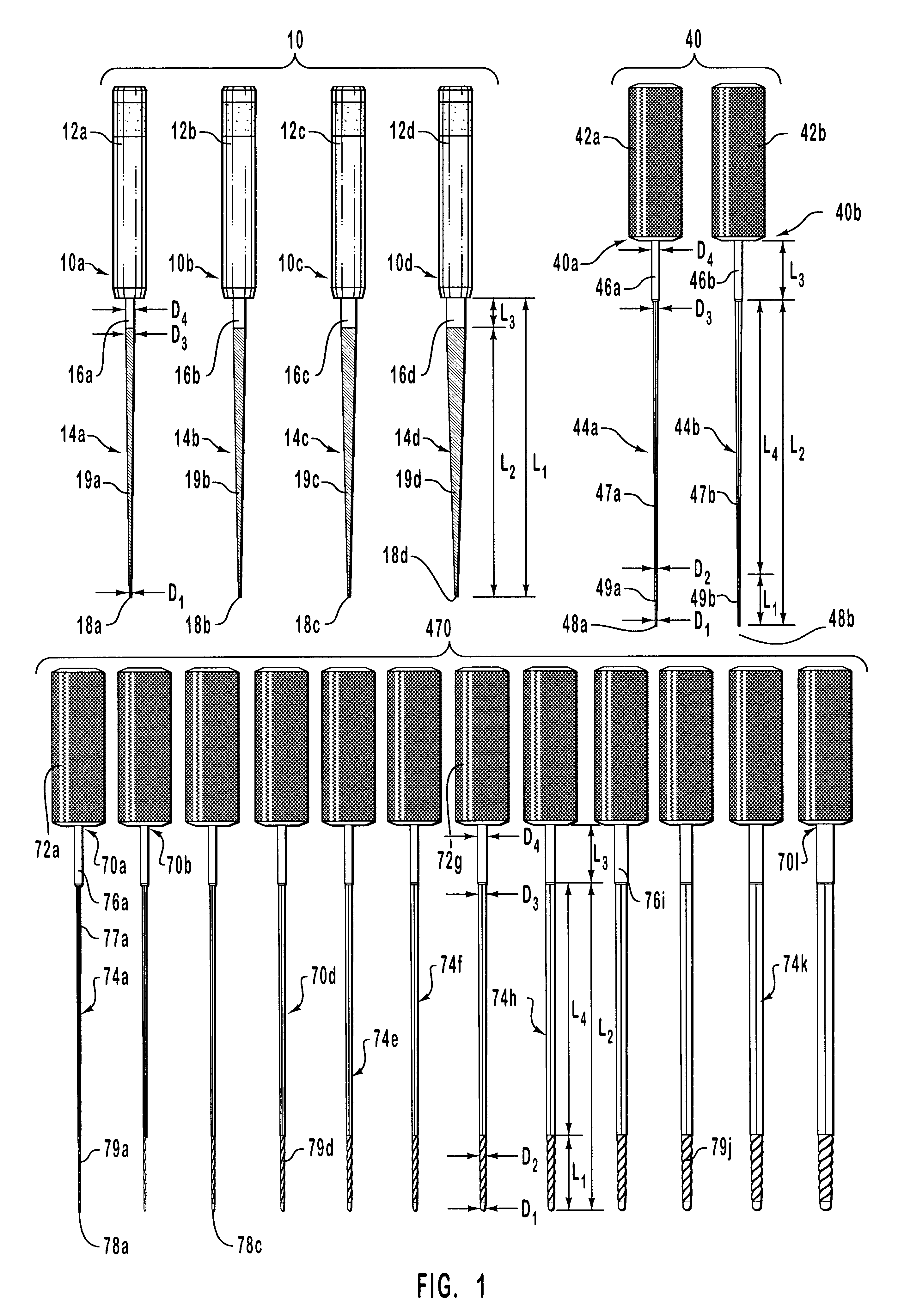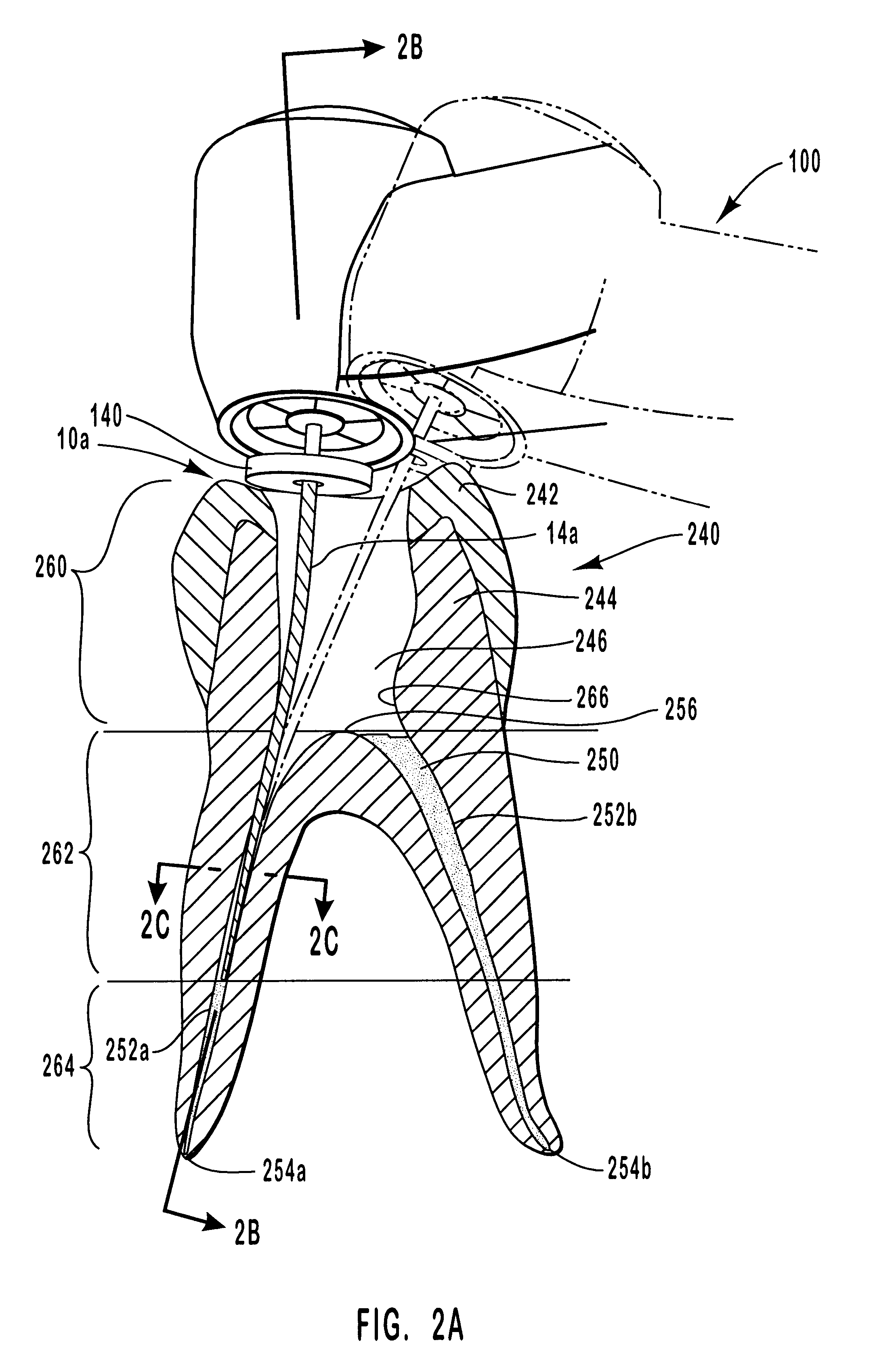Precipitation hardenable stainless steel endodontic instruments and methods for manufacturing and using the instruments
a technology of hardenable stainless steel, which is applied in the field of precipitation hardenable stainless steel endodontic instruments, can solve the problems of increasing the difficulty of the file to adjust to or follow the contours of the perimeter surface of the root canal, reducing flexibility, and increasing the likelihood of the file to be damaged, so as to achieve optimal characteristics, increase the hardness, and effective use in endodontic practice
- Summary
- Abstract
- Description
- Claims
- Application Information
AI Technical Summary
Benefits of technology
Problems solved by technology
Method used
Image
Examples
example 1
An embodiment of a preferred stainless steel has the following composition: up to about 0.09% C, up to about 1.00% Mn, up to about 1.00% Si, from about 14.0% to about 16.0% Cr, from about 6.5% to about 7.75% Ni, from about 2.0% to about 3.0% Mo, up to about 0.04% P, up to about 0.04% S, and from about 0.75% to about 1.50% Al.
example 2
Another embodiment of a preferred stainless steels has the following composition: up to about 0.09% C, up to about 1.00% Mn, up to about 1.00% Si, from about 14.0% to about 16.0% Cr, from about 6.5% to about 7.75% Ni, from about 2.0% to about 3.0% Mo, up to about 0.04% P, and up to about 0.04% S.
example 3
Another embodiment of a preferred stainless steel has the following composition: up to about 0.09% C, up to about 1.00% Mn, up to about 1.00% Si, from about 16.0% to about 18.0% Cr, from about 6.5% to about 7.75% Ni, up to about 0.04% P, up to about 0.04% S, and from about 0.75% to about 1.50% Al.
PUM
| Property | Measurement | Unit |
|---|---|---|
| temperatures | aaaaa | aaaaa |
| temperatures | aaaaa | aaaaa |
| diameter | aaaaa | aaaaa |
Abstract
Description
Claims
Application Information
 Login to View More
Login to View More - R&D
- Intellectual Property
- Life Sciences
- Materials
- Tech Scout
- Unparalleled Data Quality
- Higher Quality Content
- 60% Fewer Hallucinations
Browse by: Latest US Patents, China's latest patents, Technical Efficacy Thesaurus, Application Domain, Technology Topic, Popular Technical Reports.
© 2025 PatSnap. All rights reserved.Legal|Privacy policy|Modern Slavery Act Transparency Statement|Sitemap|About US| Contact US: help@patsnap.com



